Cooling – Why Go Ductless
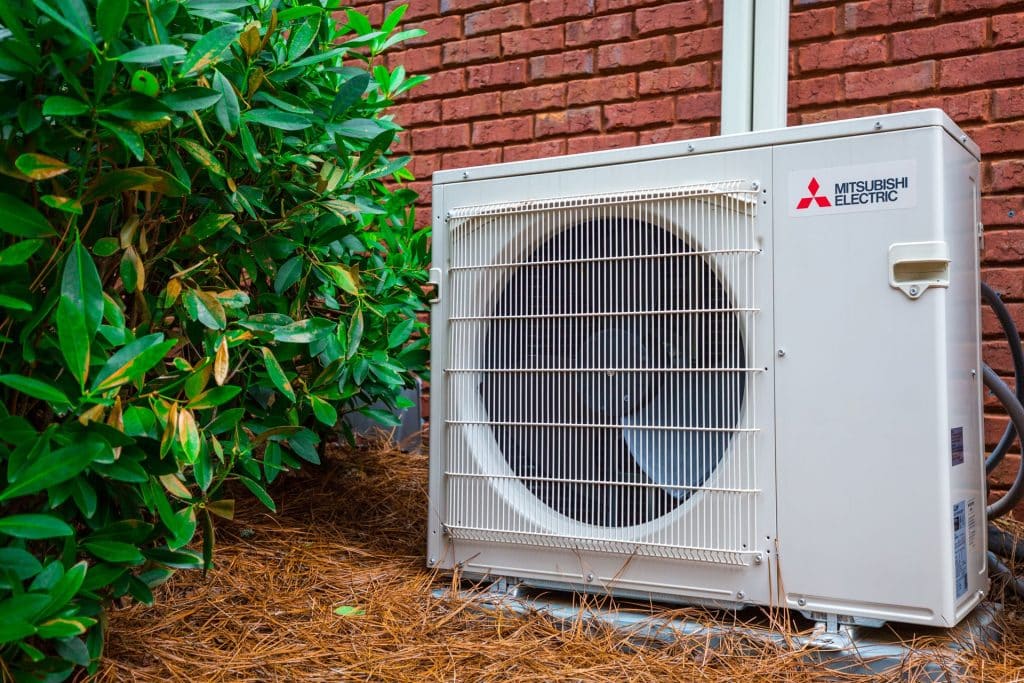
When it comes to customizable cooling options for your home, you need an AC system that will work efficiently to meet your cooling needs. Discover the freedom to control the temperature throughout your home while maintaining comfort in the spaces used most often.
The cooling experts at N.E.T.R., Inc. have the knowledge and tools needed to select, install, and maintain your air conditioning system. With a ductless mini-split air conditioning system, you can achieve complete temperature control, better indoor air quality, and lower energy bills..
What is a Ductless Mini-Split AC System?
A ductless air conditioner, which is also known as a mini-split system, incorporates two main components. The first is a cooling unit mounted to an interior wall, and the second unit is located outside of the home or business.
Refrigerant and electrical lines connect from the exterior walls to the indoor wall-mounted cooling units. Two refrigerant lines run between the two units; one line delivers electricity while the other removes condensate (water).
The outdoor unit includes an inverter-driven heat pump that cools refrigerant and sends it inside to an air handler via small lines. A wireless control unit allows you to adjust the temperature, fan speed, and more with the touch of a button.
Ductless HVAC systems offer numerous benefits. They are easy to install, operate quietly, and offer an attractive design. Ductless systems are reliable, able to heat and cool with the same system, and are controlled wirelessly. A ductless system is ideal for new additions, renovated spaces, and garage or basement rooms, and it’s an effective solution for any property that can’t accommodate ductwork.
Indoor units can be installed anywhere in the room — on the ceiling, walls, or even on the floor. Outdoor units come in a wide variety of capacities, are easy to install, and can be camouflaged — which is especially significant for maintaining the aesthetic of historic homes.
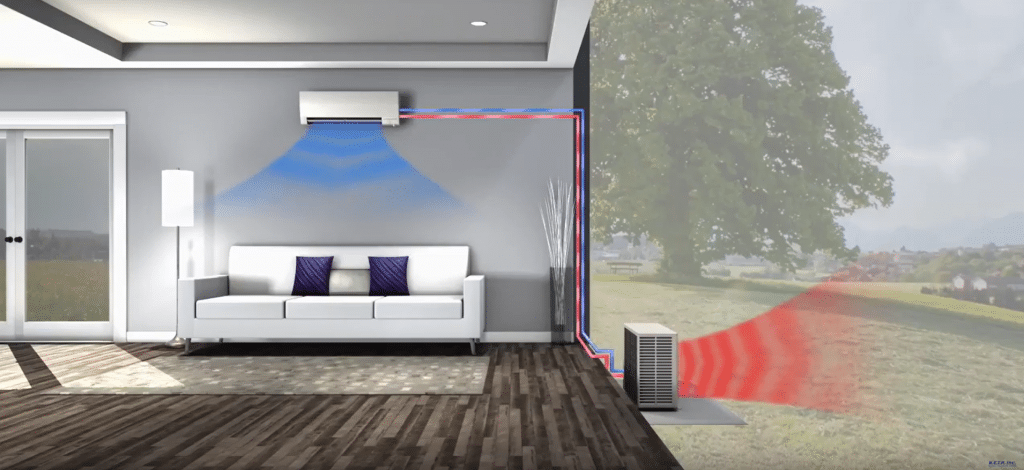
Mitsubishi Ductless Air Conditioning Systems
Mitsubishi is the worldwide leader in ductless technology and is America’s #1 selling brand of ductless air conditioning systems.
With a ductless system from Mitsubishi, you can actively cool the rooms you want to cool while dialing back energy costs in the rooms that are not in use. Plus, Mitsubishi’s inverter-driven compressors automatically adjust to changing conditions to deliver an ideal level of comfort while only using a minimal amount of energy.
You also get these benefits:
- Cooling is up to 40% more efficient than standard systems
- Single and multi-zone systems available to fit any room or your entire property
- Options include more than 25 ENERGY STAR® qualified models and 9 ENERGY STAR® Most Efficient models
How Does a Ductless System Differ from Central Air Conditioning?
With a ductless system in place, the amount of cold air that enters a room can be controlled via a wireless remote. This makes it possible to maintain one room or an area of a building at a different temperature from another room or area located within the same building.
With a central air conditioning system, cooled air is distributed to every room via a system of ducts. That makes it impossible to control the amount of cool air in a single room without changing the temperature of every room in the building.
Additionally, since central air conditioning systems depend on air ducts, they carry with them the risks of poor indoor air quality. While air ducts are good at distributing cool air, they only work when they are in top condition. Damaged air ducts can allow pollutants to enter your system and be distributed through the entire home. Since ductless air conditioners do not rely on ducts to bring cool air into the home, indoor air stays clean.
With a ductless mini-split AC system, you can benefit from little to no fluctuation of temperature, and the indoor air quality will be improved overall.
Why Choose a Ductless Cooling System Over a Window AC Unit?
A window AC unit must be placed in a window, which means reduced light and the inability to use the window for fresh air. Additionally, the air conditioner must also be the proper size to fit the window opening. That means that you’ll have to also worry about how you will fill the remaining space around the air conditioner, which could result in even less visibility to the outdoors, as well as an eyesore.
Installing a window AC unit is also a security risk because there isn’t much there to hold it in the window. An intruder could easily remove it from the outside to gain access to the property. Ductless systems, on the other hand, leave all windows available for use and pose no threats to home security. Click here to see a direct comparison; Window Units vs Ductless AC
Ductless Air Conditioner Maintenance
To keep your ductless air conditioning system running smoothly, regular maintenance must be performed by an expert who knows how to properly service the unit. Our team of experienced comfort specialists undergo extensive training to efficiently and accurately maintain the ductless units.
N.E.T.R., Inc. employs the manufacturers recommendations to ensure that your air conditioner continues to work for years to come. No job is too large or too small. We can handle ductless air conditioning systems in both residential and commercial buildings.
Ductless Mini-Split Repair Services in Boston, MA
If you’ve noticed a drop in the performance or you are not receiving any cool air at all from your ductless air conditioner, get in touch with us right away. We offer 24-hour emergency air conditioning repair so you won’t have to wait long to get your system back up and running.
Our ductless air conditioning technicians are ready to deliver top quality repair services. Call us today for professional ductless AC services in Boston, MA and the surrounding area.
Why Choose N.E.T.R., Inc. Ductless Air Conditioning Installation Experts
N.E.T.R., Inc. is dedicated to giving our clients the fast, efficient, reliable, and affordable cooling solutions that they deserve. As the largest ductless contractor in New England with thousands of ductless system installations in the region, we are incredibly experienced and know our ductless units inside and out.
N.E.T.R., Inc. has been in business since 1989, and is a 100% compliant Mitsubishi Electric’s Elite Diamond Contractor.
When you hire N.E.T.R., Inc. for your ductless air conditioning system installation, we’ll evaluate your space to determine what type of ductless system would best serve your needs. Then, we’ll work quickly to install your new system, all while keeping an eye on the important details to ensure your satisfaction.
Increased efficiency and cost savings are easy with Boston, MA ductless air conditioning system installation, maintenance, and repair. Call N.E.T.R. Inc at 781-933-6387 to learn more.
How Much Does an American Standard Air Conditioner Cost in Boston, MA?
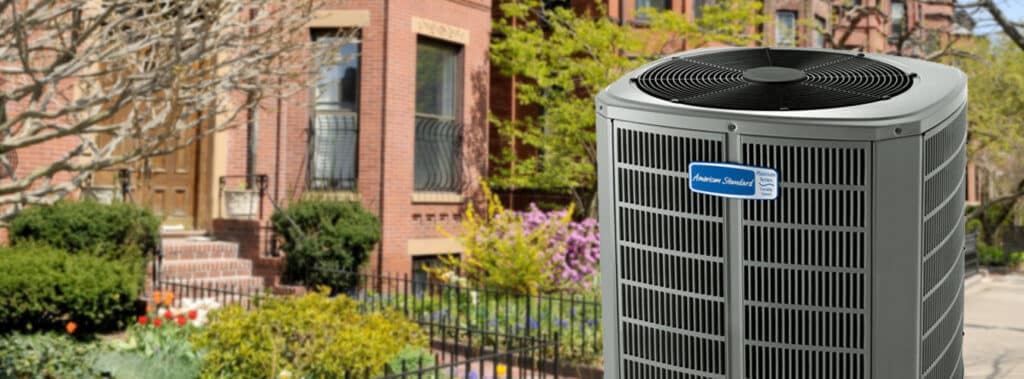
In the Boston, MA area, a traditional or unitary American Standard air conditioner with installation costs around $4,500 or higher depending on several different factors.
If you’re thinking about investing in an American Standard central air conditioner for your home, you may be wondering how much these units cost and what factors affect the final price tag. Keep reading for answers to these questions.
The Value of Professional Installation
If you search for American Standard air conditioners online, you may see sticker prices that are cheaper than the numbers quote above. Typically, this happens when you look at the cost of an AC unit without installation.
Keep in mind that quality HVAC professionals provide a valuable service, and although their fees drive up the total cost, their expertise ensures the unit is installed correctly. Improper installation can cause inefficiencies or breakdowns, and additionally, DIY installation voids many warranties.
To learn more, check out: 7 Reasons to Choose Professional Installation for Your Heating and Cooling System
What Determines the Cost of an American Standard AC?
For over 100 years, American Standard has been an emblem of quality, and investing in this type of AC improves the comfort of your home. So, in light of a history of quality and comfort, how much should you expect to pay for an American Standard AC?
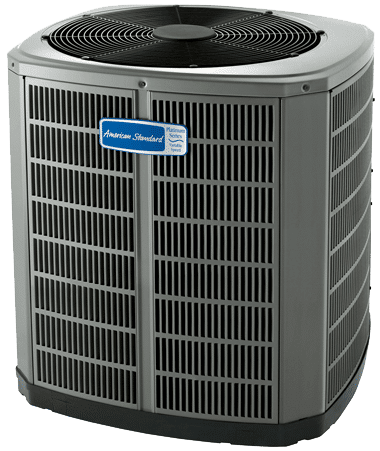
Ultimately, the cost of a new AC in Boston, MA depends on several factors including the following:
- Seasonal Environmental Efficiency Ratio (SEER): The SEER rating indicates the efficiency of an AC unit, and as a general rule of thumb, you should expect to pay higher prices for units with higher (more efficient) SEER ratings. All American Standard ACs meet or exceed the minimum SEER levels for Energy Star certification, but gold and platinum models have higher ratings than silver American Standard models.
- Cooling Area: The size of the area you want to cool dictates the size of the air conditioner you need, and of course, large ACs cost more. For example, while a 1.5 ton unit can easily cool a 900 square foot space, you typically need a 5 ton unit, if you want to cool three times that area (2700 square feet), and with the increase in size, your costs nearly double.
- Ductwork: If your ducts are in good working order, they won’t affect your final cost, but if they need to be repaired or extended into certain parts of your home, you should budget for a higher upfront cost.
- AC Model: American Standard comes in three different tiers with various models in each level. The Platinum and Gold levels feature variable stage compressors and Spine Fin coils to help boost efficiency, while the Silver series models combine value with reliability.
- Size of Outdoor Compressor: The above price range correlates with a 2.5 ton outdoor compressor. In commercial environments, multi-unit residences, or even very large homes, you may need a larger compressor which can increase the cost of your American Standard AC.
- Installation Challenges: Unique installation challenges can also affect the cost of installing an American Standard AC, but when you work with an experienced HVAC contractor, they can assess the situation and give you heads up about potential installation issues or extra costs before they get started.
- Additional Equipment: If you need to add an air handler or a furnace, you should expect to pay a higher price.
- Tax Credits, Special Offers, or Rebates: In some cases, you may be able to offset some of the cost of an American Standard air conditioner with tax credits, special offers, or rebates. These types of deals change frequently, and when you contact an HVAC professional, they can tell you about any offers currently available.
Is American Standard a Good Value Air Conditioner?
American Standard is committed to quality, and by investing in an American Standard air conditioner, you boost efficiency, reduce unnecessary energy consumption, and make your home more comfortable even in the hottest temperatures. The three different tiers lets you balance the features you need with a price you can afford.
How to Get an American Standard AC in Boston, MA
At N.E.T.R., Inc, we have been selected by American Standard to be a Customer Care Dealer. When you contact us about a new AC, we don’t just quickly choose cooling equipment based solely on the size of your home. Instead, we use our extensive training to assess multiple elements about your home environment and your cooling needs to ensure we choose the ideal American Standard model for your situation.
To learn more, contact us today. We have been meeting the heating and cooling needs of homes and businesses in the greater Boston area for over 30 years, and we look forward to improving the comfort and efficiency of your home.
How Much Does an American Standard Gas Furnace Cost in Boston, MA?
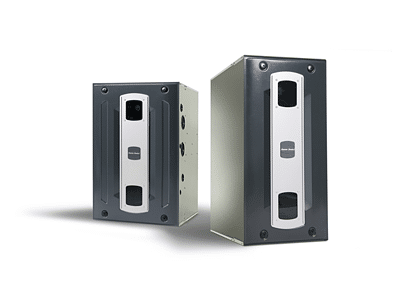
In the Boston, MA area, the cost of an American Standard gas furnace is around $4,500 or higher, but the final price varies based on several factors.
Want to improve the comfort of your home? Ready to enjoy the quality of an American Standard gas furnace? Wondering how much you should budget for a new American Standard gas furnace? Here is what you need to consider. .
The Value of Professional Installation
When many people look at HVAC equipment online, they only see the sticker price for the equipment, and often, they are shocked when they contact an HVAC company and receive a higher quote. This discrepancy is due to installation costs.
Although it drives up your total costs, professional installation safeguards the quality of your heating equipment, ensures proper set up, and helps to keep your warranty intact.
To learn more, check out: 7 Reasons to Choose Professional Installation for Your Heating and Cooling System
What Determines the Cost of an American Standard Gas Furnace?
For over 100 years, the American Standard name has been synonymous with quality, and when you invest in this type of gas furnace, your total cost can vary based on the following factors:
- Furnace model: American Standard gas furnaces fall into three different tiers: Platinum, Gold, and Silver, and there are several models available at each tier level. Expect to pay higher prices for a Platinum or Gold furnace than for a Silver furnace.
- The size of your home: Larger homes need larger, more powerful furnaces, and as a result, the size of your home directly correlates with the price of your furnace.
- Your climate zone: Your climate plays a significant role in determining the power you need for your gas furnace. If you live in a very cold climate, you need a more powerful furnace to heat the same amount of space that you would be able to heat with a smaller furnace in a warmer climate.
- The condition of your home: On top of considering the size of your home and your climate, you also have to consider the condition of your home. For instance, if you have an older home without a lot of insulation, you may need a bigger, more expensive furnace. On the flip side, if you have a lot of passive solar heat coming into your home, you may be able to get away with a smaller, less expensive gas furnace.
- AFUE (Annual Fuel Utilization Efficiency) rating: A high AFUE indicates high levels of efficiency, and to be as efficient as possible, gas furnaces need special technology that can increase their cost. However, if you save money upfront by buying a less efficient furnace, you will face slightly higher utility costs when you run your furnace.
- Installation Challenges: Your total price will increase if you need new ductwork, new vents, or other repairs to facilitate the installation of your gas furnace.
- Tax Credits, Special Offers, or Rebates: Sometimes, you can offset the cost of a new American Standard gas furnace with tax credits, special offers, or rebates. These types of deals change regularly, and when you contact us, we can let you know about current savings.
Do American Standard Gas Furnaces Provide Value?
When you invest in a high quality gas furnace from American Standard, you enjoy consistent temperatures, efficient operations, and fewer repair issues. In a lot of cases, higher upfront costs provide value by giving you lower operating and repair costs during the lifetime of your equipment.
How to Get an American Standard Gas Furnace in Boston, MA
We have been extensively trained to help our customers find the very best gas furnace for their needs. As Indicated above, we don’t just glance at the size of your home or business — instead, we take into account all the factors that affect your heating needs, and we very carefully guide you toward the right furnace for your situation.
To learn more about the cost of American Standard gas furnaces, contact us today. We have been providing HVAC installation, service, and repairs to homes and businesses in the Boston area for over 30 years, and we look forward to helping you improve the comfort and efficiency of your residential or commercial heating.
How Do I Determine the Tonnage of My HVAC Unit?
One of the most important aspects of proper HVAC system installation is ensuring that the unit you’ve selected is the right size for your space. Here’s what you need to know about HVAC tonnage and how to make sure your unit will meet your heating and cooling needs.
What Is HVAC Tonnage?
The amount of energy that an HVAC unit is able to expend is called its “tonnage.” Generally, this is the unit’s capacity to heat and/or cool a space. A unit with more tonnage can heat a larger space while a unit with less tonnage is more suitable to smaller spaces.
Contrary to popular belief, when you’re talking about the “size” of an HVAC unit, you’re usually not discussing its physical dimensions. Instead, a unit’s size is its tonnage.
Why Does HVAC Tonnage Matter?
HVAC tonnage is one of the most important calculations in the entire industry. If you install a unit that is too small for the space it’s meant to heat or cool, you likely won’t reach your desired temperatures even with the unit essentially staying on constantly in an effort to keep up with the too-large area.
Units that are too large for a space can be unnecessarily expensive. It will typically start turning on and off more often, putting more strain on your unit — and your electric bills.
How to Calculate the Tonnage of Your HVAC Unit
You may be able to determine the tonnage of your HVAC unit by simply reading the manufacturer’s label on your system’s outdoor unit. However, most manufacturers don’t list tonnage and instead, list BTUs. Converting BTUs to tonnage can be done by simply dividing the BTUs by 12,000. For example, if your HVAC system is 24,000 BTUs, its tonnage is 2.
What Size HVAC Unit Do You Need?
The general rule in the heating and cooling industry is that one ton will heat or cool approximately 400 square feet of space. So, a 2-ton HVAC unit is actually quite small and would be too small for any space under 1,000 square feet. A 1200 square foot home would require no less than a 3-ton unit to heat and cool effectively throughout the house.
Other factors may also go into determining the size of your HVAC unit, such as home layout, existing supplemental heating, and more.
Take the Guesswork Out of HVAC with N.E.T.R., Inc.
It’s not every day that the average person can accurately calculate the tonnage needed from an HVAC system for a specific building or residence. However, this critical data is essential for determining the appropriate size of your HVAC unit. Get help making sure your HVAC system is properly sized for your home or business today by calling N.E.T.R., Inc. at 781.933.NETR (6387).
Ductless is Efficient

The majority of our systems are ENERGY STAR® qualified and many systems are eligible for federal and state tax credits plus local utility rebates.
DUCTLESS USES INVERTER TECHNOLOGY
Mitsubishi Electric Cooling & Heating systems are dramatically more efficient than traditional HVAC systems. Utilizing INVERTER-driven compressors, our systems automatically adjust to changing conditions to deliver ideal comfort while only using the energy that is needed. No more. No less.
As a result, our systems are up to 40% more efficient than standard window units for cooling and our heating performance is far superior to traditional heat pumps. All this technological innovation means you reduce your energy consumption and can save money on your energy costs while enjoying the comfort of your home.
Why pay to cool/heat your home all year long when you only live in a few rooms at a time? With Mitsubishi Electric, you can actively condition the rooms you live in; the other rooms simply turn off or setback. Zoning your home to how you live using Mitsubishi Electric allows you to save energy while maximizing your personal comfort.
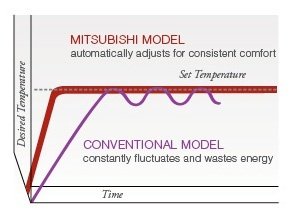
MITSUBISHI DUCTLESS HAS MORE ENERGY STAR SYSTEMS THAN EVER
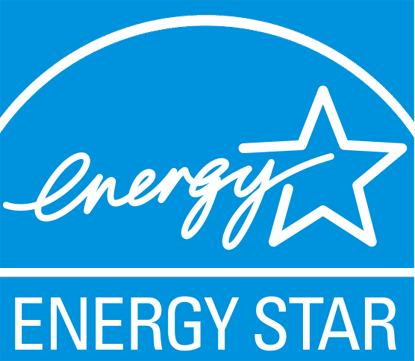
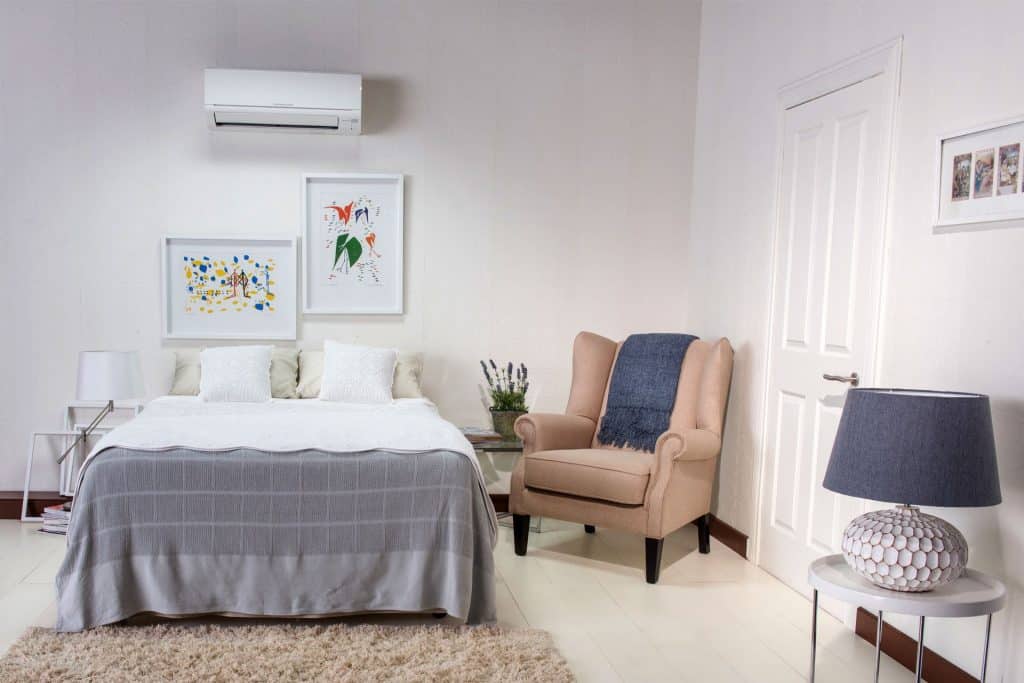
ECO-COMFORT TECHNOLOGY, DUAL AND TRIPLE ALLERGEN FILTRATION, WHISPER QUIET
Eco-comfort technology makes these systems smarter in how they use energy and minimizes their impact on the environment. Plus, there are many advanced features like the i-see Sensor™ 3D, that automatically detects room temperature differences and adjusts for greater comfort. Mitsubishi Electric’s advanced multi-stage filtration systems dramatically reduce allergens and help eliminate odors. Our indoor units operate with sound levels starting as low as 19dB(A), quieter than a human whisper.
THE MOST ADVANCED HEAT PUMP SYSTEMS IN THE WORLD
Unlike older, inefficient heat pumps, there is no cold air delivery with Mitsubishi Electric’s Cooling & Heating systems. The Hot StartTM system doesn’t activate the fan until the desired temperature is reached, so it never blows cold air. Select models use Hyper-Heating INVERTER (H2i®) technology that operates effectively down to -13º F. These models give true year-round comfort from a single system.
EASY INSTALLATION, SIMPLE SERVICE, LONGER WARRANTIES
Although, with our industry-leading reliability record, you won’t have to worry much about that. Better yet, we’ve extended our warranties to seven years on compressors and five years on parts.
AND, THEY’RE ENVIRONMENTALLY FRIENDLY TO YOU AND THE PLANET
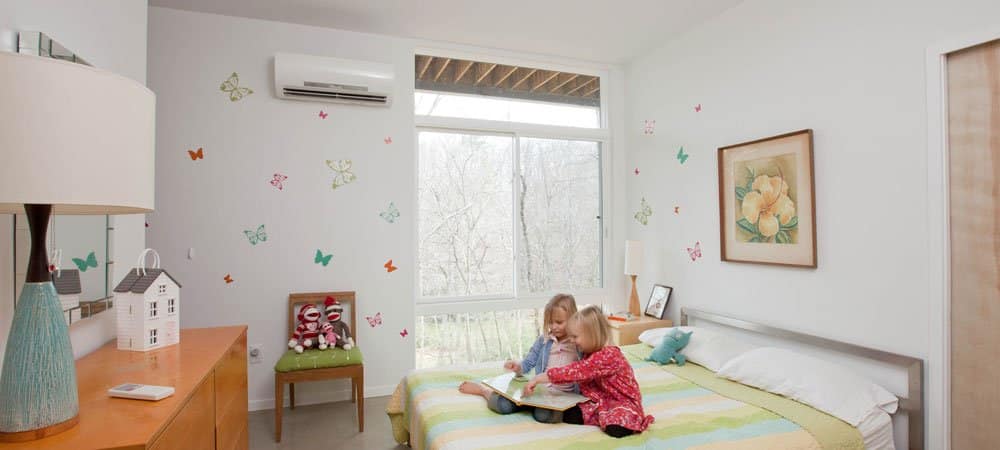
Smart energy usage: Mitsubishi Electric INVERTER zoning systems smartly deliver only the cooling and heating capacity needed, unlike a traditional full-power ON cooling and heating system. Individual indoor air handlers, ductless or ducted, are installedwithin the zone. These air handlers measure the load for that specific zone and for added efficiency deliver only the capacity needed directly to the space compared to energy lost in long ductwork runs. If a zone is not being used, you do not have to condition that space (or you can individually set it back). Smarter sensing technology and microprocessors enhance the system’s ability to measure room temperature accurately for added comfort, performance and efficiency.
Eco-friendly refrigerant: Environmentally friendly R410A refrigerant offers zero Ozone Depletion Potential (ODP) and allows for higher heat transfer coefficient (COP). This innovative feature means a reduction in equipment size, a reduction in piping size, and higher pressure for greater performance. Smaller equipment also means less impact on the environment at the end of the product’s life cycle.
Standard compliance: All Mitsubishi Electric Cooling & Heating products follow standards and guidelines as set forth by the ENERGY STAR, EPA, AHRI, UL, ASHRAE, ETL, and ISO.
Recycling design: Our air conditioners are specially designed to allow for easy cleaning, efficient disassembly, and more practical recycling. The number of parts used in indoor units has been reduced by adopting modular components, a process which also simplifies materials separation for recycling. To date as much as 84 percent of the materials used to build a Mr. Slim system is recyclable.
Minimal impact on landfills: All Mitsubishi Electric air-conditioning products use long-life washable filters.
Ductless for Brownstones
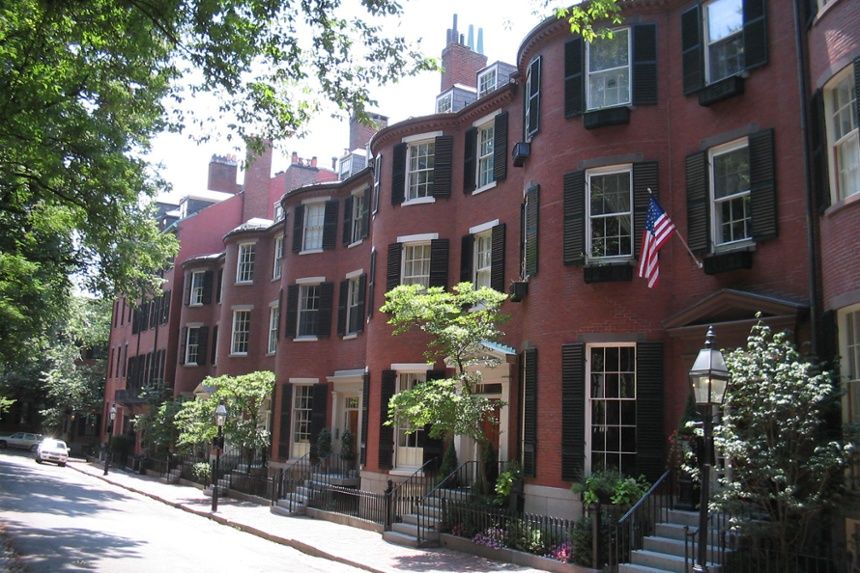
TOTAL COMFORT EVERYWHERE
Don’t jam up your South End Brownstone with the boxed-in ductwork that comes with a traditional heating and cooling system. A ductless unit in the upstairs and one downstairs will eliminate hot and cold spots while dramatically lowering your energy costs.
From Laconia to Cape Cod and Brattleboro, we’ve solved every heating and cooling problem in homes like this, and we can fix yours too.
ROW HOMES CAN BE A CHALLENGE TO HEAT AND COOL EVENLY, BUT NOT FOR DUCTLESS
HERE ARE SOME OF THE ADVANTAGES OF CHOOSING DUCTLESS FOR YOUR ROW HOME:

The outdoor condensing unit has a similarly small footprint. About the size of a suitcase, the unit can be placed in a small alley, rooftop or porch, which is especially appealing for a row house or urban dwelling with little outdoor space.
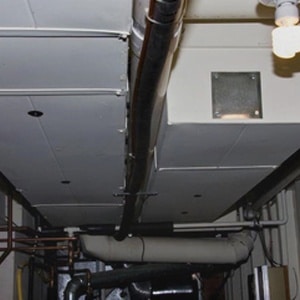
Row homes tend to be big on charm, but a little short on living space. Since Mitsubishi ductless doesn’t require that traditional, bulky ductwork you won’t have to lose any of the aesthetic value of your home or any precious space.

Ductless saves you money. No bulky ductwork means a relatively easy install and the savings get passed along to the homeowner. Also, since there is no energy loss due to leaky ductwork, these systems are super efficient.
Update November 2016: Mass COOL SMART Air Conditioner Rebates to be Reduced

Here is the Latest Update on Mass Save and CEC Rebates – November 2016
Time could be running out on the best rebates we’ve had in a long time.

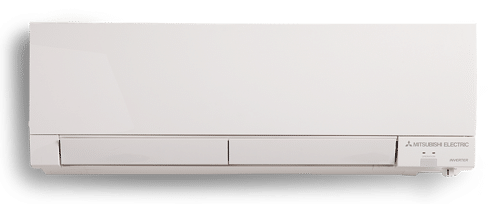
If you think you might even remotely be in the market for a ductless heat pump / air conditioner system before next summer, the clock is ticking. Talk to us now so you can weigh your options. The more zones you need conditioned, the more savings you have at risk.
Rebate amounts were increased earlier this year, and the savings for our customers has been in the hundreds of thousands of dollars. Details are outlined further down. Act soon, as applications for rebates at 2016 levels must be submitted by December 31, 2016 to qualify! Then we’ll have 90 days to complete your installation.
PLEASE ACT NOW!
Ductless is a perfect option for a large family room or open floor plan
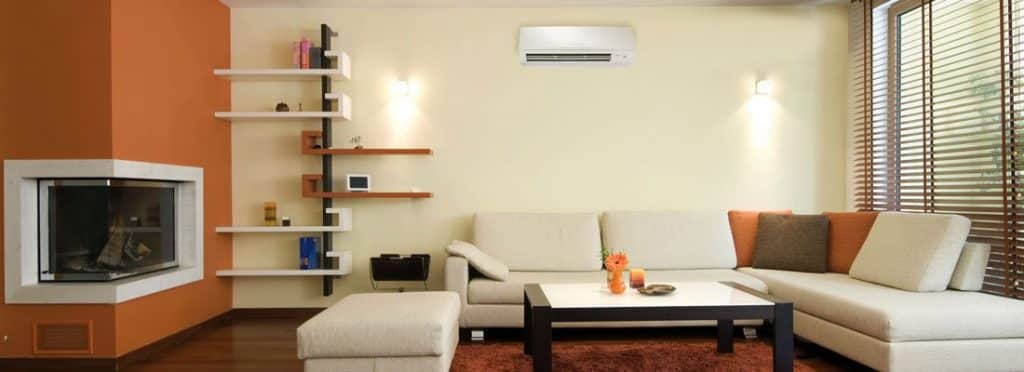
These savings are just the beginning…
Since the rebate amounts were increased earlier this year, we’ve been swamped with installations on the North Shore, in Mission Hill, Beacon Hill, the North End, Cambridge and the Back Bay. Not only will these customers save money on installation, but ductless heating and cooling is up to 40% more efficient than traditional systems which will save them big on energy costs for years to come.

See how these Reading, MA homeowners trimmed their $3000 heating oil bill to $0 in one season, and saved 60% on their overall energy costs.
Click here for the story
We can help you with this process!
We’ve helped hundreds of residents all over the greater Boston area take advantage of this free money to make the transition to super-efficient ductless heating and cooling.
There are a lot of moving pieces to getting the application process correct in order to receive the maximum possible cash back, so please let us help you too.
Check out the unprecedented rebate amounts on the following chart. You could save thousands! When you’re ready, download the application or schedule a conversation with us to get the ball rolling.
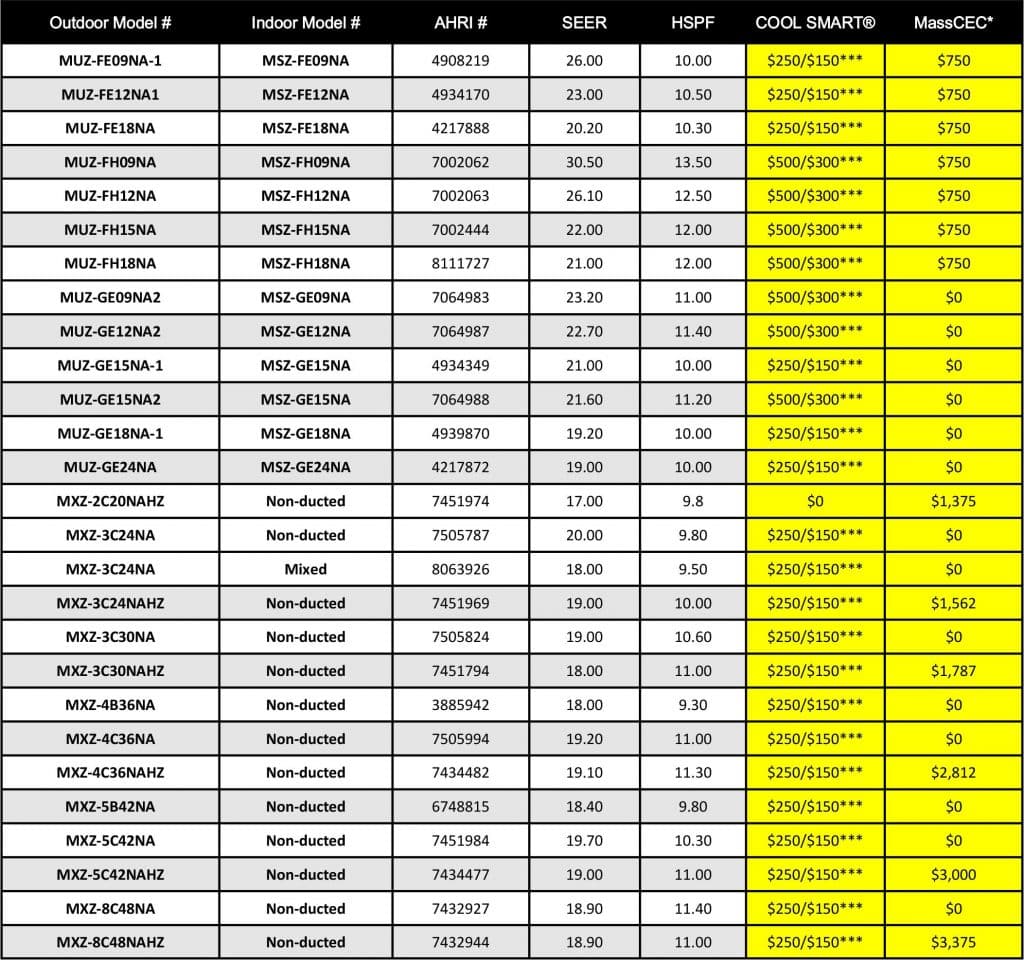

Check out the ductless installation we did in this South End Brownstone.
Read more here

Mass Save Heat Loan Process
Step 1: Call us at 781-933-6387.
Step 2: Our Specialist will explain program at Energy Audit.
What you will need
- Install qualifying product by licensed contractor, like N.E.T.R., Inc.
- AHRI certificate (for AC & Heat Pump rebates only – please keep the original for you records).
- Must be customer of participating utility
- Obtain invoice with model #, size in tons, date and location of installation, and installation cost.
- Within 90 days of installation: Main AHRI cert, rebate application, copy of utility bill, invoice from contractor.
- Copy entire package and keep signed copy.

* MassCEC rebate is available until December 31, 2016.
** Data compiles in June 2016. Programs charge at the discretion of the program manager.
*** Effective 4/20/2015, National Grid of MA rebates are $150 and $300. Mitsubishi Electric is not responsible for actual rebate amounts. Please check with Mass Save* & MassCEC for details and updates.
In order to be eligible for a Mass CEC rebate, Projects must:
- Be installed by a manufacturer-trained installer, like N.E.T.R., Inc.
- Use the installed air-source heat pump (ASHP) for heating consistently throughout the winter.
- Have Eversource, National Grid, Unitil, or an eligible municipal light plant, as the electric provider.
- Include an ASHP from Mass CEC’s list of eligible equipment.
- Have a home energy audit from within the last four (4) years or have one scheduled within six (6) months of project completion. **
To apply for the Mass CEC rebate: Provide the following information to NETR, Inc and we’ll submit the rebate application:
- Project site address and rebate mailing address.
- An initialed and signed Residential Air- Source Heat Pump Participant’s Agreement.
- A copy of a recent month’s electric bill showing the “service for” address and the residential rate code.
- Complete Income-Verification, if applicable.
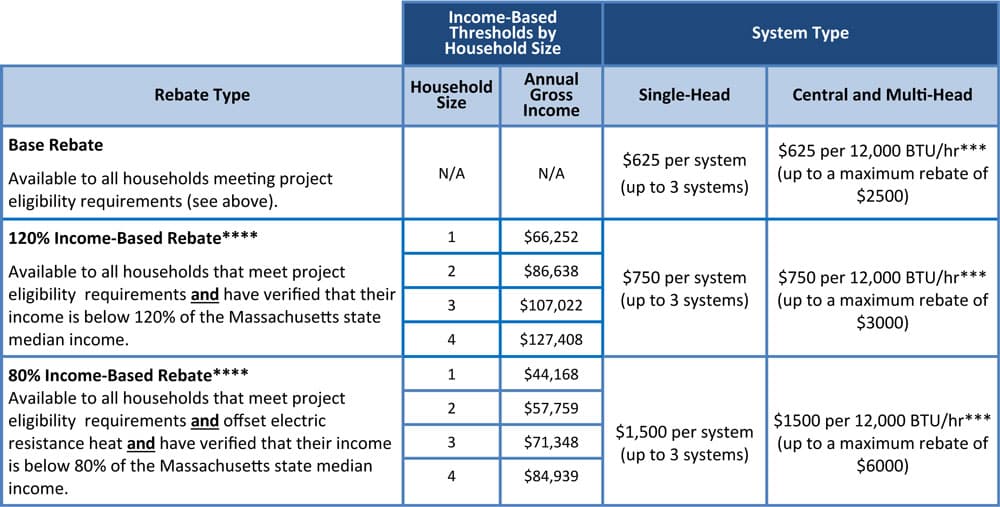
* Full program requirements should be reviewed in the Program Manual.
** New Homes, and multifamily residences with more than 4 units do not require an energy audit. If you live in an area with a scheduling backlog, please submit an email confirming you are in queue for scheduling with your application. Please call us at 781-933-6387 to schedule.
*** For the purposes of determining rebate levels, the Mass CEC uses the system’s maximum heating capacity (BTU/hr) at 5°F.
**** To Receive an Income-Based Rebate, the homeowner must complete one of the accepted income verification methods. Please see the Program Manual (section 2.4) for more information about Income-Based Rebates and income verification methods.
Switching to ductless will save you money

Your energy bills will be lower and you will reduce your carbon footprint.
In addition to the best air conditioning you can possibly put in a home, one of the hidden incentives behind this program, and one of the main reasons they do these huge rebates on ductless systems, is the dramatic energy savings homeowners will see come the winter months.
Mitsubishi’s h2i heat pump inverter technology is a massive shift in heat pump capability and efficiency, especially for New England homeowners who got pummeled by this past winter. These Mitsubishi ductless systems will save you hundreds if not thousands of dollars just by supplementing your gas or oil heating system.
So, folks, take a deep breath and let’s talk about the right system for your home.

To qualify for rebates at the originally authorized January 2016 levels, equipment must be installed by December 31, 2016, and all rebate forms and required documentation (including dated invoices) must be postmarked or submitted online within 30 days of the equipment installation date.
Submissions not meeting these requirements will be fulfilled at the new rebate levels. Exceptions will be made for customers already authorized for a HEAT Loan based on January 2016 rebate levels.
National Grid is committed to serving as many customers as possible, and will continue to closely monitor the funding for this program in order to serve our customers and save energy.
Window Units vs. Ductless AC
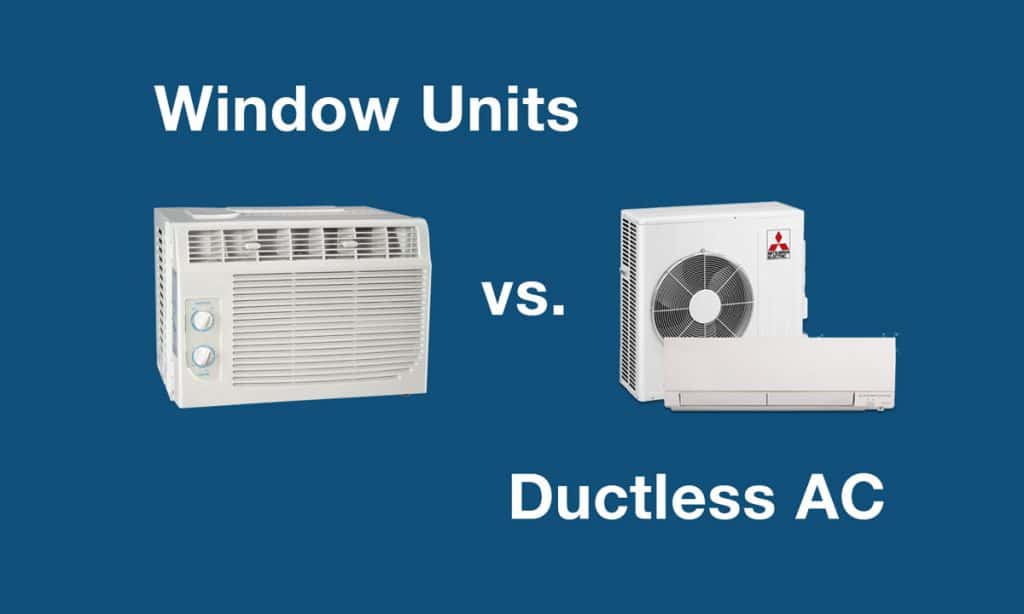
If you’re looking for a new air conditioner, there are a lot of options. If you don’t have ducts and don’t want to add them, you have two main choices: window units and ductless AC. Both can cool at least one room, neither require ducts, but which is the best option?
Here’s a brief guide to the main differences between window units and ductless systems.
What Is a Window Unit?
A window air conditioning unit fits into a window frame or an opening in the wall and it provides cooling for a single room. These units have several temperature and fan settings so you can adjust them according to your needs, and many units let you just use the fan feature without turning on the air conditioning mode. Generally, window AC units have internal thermostats, and they run until they sense that the air in the room has cooled down to the appropriate level.
They are relatively easy to install on your own, but they can be noisy and difficult to control accurately.
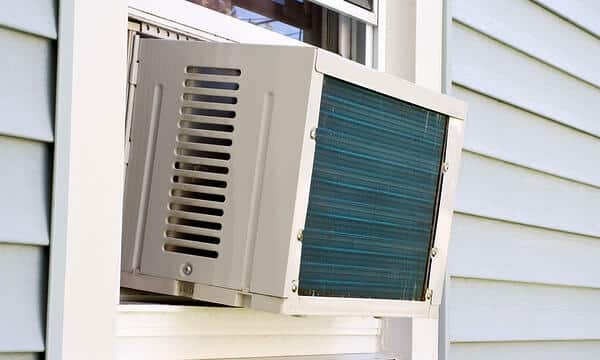
What is a Ductless System?
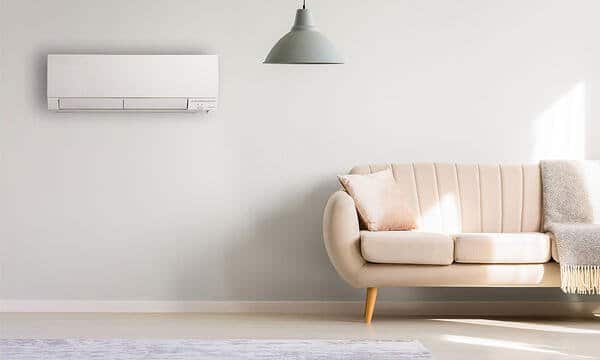
Also called a mini-split, a ductless system consists of both indoor and outdoor components. The outdoor part houses the compressor and the condenser, while the indoor unit handles the cool air. Tubing carries refrigerant, electricity, and communication signals between these two components. Just like all other air conditioners, the refrigerant absorbs heat from inside the building and releases it outside.
Window AC Unit vs. Ductless System
If you are trying to choose between a window air conditioner or a ductless system, here are some of the main factors you should consider:
Security

No matter where you install a window air conditioner, it compromises the security of your home or business. Intruders simply need to hoist the system out of the way to gain entry into the building. With a ductless AC system, the installation contractors only need to drill small holes in your outdoor walls in order to connect the suction lines, refrigerant lines, and power cables. That means that you don’t have to worry about your ductless system creating a security risk in any way.
Convenience

When you install a window air conditioner, you lose the benefits of having a window. You can’t open the window to bring in fresh air, and you may even have to sacrifice a great view. In contrast, ductless systems can be placed nearly anywhere on your interior wall or ceiling. Additionally, window air conditioners are often considered to be temporary cooling solutions. Even people who use them year after year tend to take them down in the winter, and that can be time consuming and annoying. Ductless units are a permanent feature.
Flexibility

Window air conditioners are designed to cool a single room, and to cool multiple spaces or large areas, you need to buy multiple units. In contrast, a ductless system let you pair multiple indoor units with a single outdoor unit, and you can control all of the units separately. To increase your options, the indoor units come in a wide range of different designs, so you can customize your set-up to work with your space. Ductless systems also feature reversible heat pumps and are also capable of providing heat.
Energy Efficiency

When it comes to energy efficiency, ductless systems are clearly the winners. Some window air conditioning units come with ENERGY STAR® ratings, but the SEER ratings on many mini-split systems are much more efficient. In addition, window air conditioners also tend to have a lot of air leaks — gaps between the unit and the window frame are practically unavoidable.
Easy Installation

The absence of ductwork makes ductless systems relatively fast and easy to install. There is no need to tear down walls or do major renovations, and most contractors can handle small installations in a day or so. For large installations with multiple indoor and outdoor units, you can even opt to do the installation in zones so that you don’t have to shut down all of your operations.
Cost

If you don’t have existing ductwork, the cost of ductless is considerably less expensive than putting in a central HVAC system. In cases, where the ductwork is already in place, however, ductless systems may be slightly more expensive than just buying a new central air conditioner.
However, installation is only the first cost to consider. You should also consider energy efficiency, and in most cases, ductless systems are cheaper to run long-term. Beyond that, you never have to worry about cleaning the ducts when you have a ductless system, and that adds to the overall savings.
Mass COOL SMART Air Conditioner Rebates

Here is the Latest Update on Mass Save and CEC Rebates – FEBRUARY 2019
Mass CEC is Ending Energy Efficiency Rebate for Ductless Mini-Splits
Effective March 20, 2019


If you heat your home with oil or propane you have a small window of opportunity to save an additional $2000 with Mass CEC rebates on a multi-zone ductless mini-split system.
This is not a gimmick!
Recent cutbacks to Federal funding and clean energy incentives have dramatically impacted the Mass CEC rebate program, but there is till time to get some of this money.
PLEASE ACT NOW!
We need to have your system installed and your rebate paperwork submitted by March 20, 2019!
THESE REBATES WILL BE REDUCED DRAMATICALLY ON MARCH 20TH!

These savings are just the beginning…
Since the rebate amounts were increased, we’ve been swamped with installations on the North and South Shores, Mission Hill, Beacon Hill, the North End, Cambridge and the Back Bay. Not only will these customers save money on installation, but ductless heating and cooling is up to 40% more efficient than traditional systems which will save them big on energy costs for years to come.

See how these Reading, MA homeowners trimmed their $3000 heating oil bill to $0 in one season, and saved 60% on their overall energy costs.
Click here for the story
We can help you with this process!
We’ve helped hundreds of residents all over the greater Boston area take advantage of this free money to make the transition to super-efficient ductless heating and cooling.
Check out the unprecedented rebate amounts on the following chart. You could save thousands! When you’re ready, download the application or schedule a conversation with us to get the ball rolling.


Check out the ductless installation we did in this South End Brownstone.
Read more here

Mass Save Heat Loan Process
Step 1: Call us at 781-933-6387.
Step 2: Our Specialist will explain program at Energy Audit.
What you will need
- Install qualifying product by licensed contractor, like N.E.T.R., Inc.
- AHRI certificate (for AC & Heat Pump rebates only – please keep the original for you records).
- Must be customer of participating utility
- Obtain invoice with model #, size in tons, date and location of installation, and installation cost.
- Within 90 days of installation: Main AHRI cert, rebate application, copy of utility bill, invoice from contractor.
- Copy entire package and keep signed copy.
In order to be eligible for a Mass CEC rebate, Projects must:
- Be installed by a manufacturer-trained installer, like N.E.T.R., Inc.
- Use the installed air-source heat pump (ASHP) for heating consistently throughout the winter.
- Have Eversource, National Grid, Unitil, or an eligible municipal light plant, as the electric provider.
- Include an ASHP from Mass CEC’s list of eligible equipment.
- Have a home energy audit from within the last four (4) years or have one scheduled within six (6) months of project completion. **
To apply for the Mass CEC rebate: Provide the following information to NETR, Inc and we’ll submit the rebate application:
- Project site address and rebate mailing address.
- An initialed and signed Residential Air- Source Heat Pump Participant’s Agreement.
- A copy of a recent month’s electric bill showing the “service for” address and the residential rate code.
- Complete Income-Verification, if applicable.
- * Full program requirements should be reviewed in the Program Manual.
- ** New Homes, and multifamily residences with more than 4 units do not require an energy audit. If you live in an area with a scheduling backlog, please submit an email confirming you are in queue for scheduling with your application. Please call us at 781-933-6387 to schedule.
- *** For the purposes of determining rebate levels, the Mass CEC uses the system’s maximum heating capacity (BTU/hr) at 5°F.
- **** To Receive an Income-Based Rebate, the homeowner must complete one of the accepted income verification methods. Please see the Program Manual (section 2.4) for more information about Income-Based Rebates and income verification methods.
Switching to ductless will save you money

Your energy bills will be lower and you will reduce your carbon footprint.
In addition to the best air conditioning you can possibly put in a home, one of the hidden incentives behind this program, and one of the main reasons they do these huge rebates on ductless systems, is the dramatic energy savings homeowners will see come the winter months.
Mitsubishi’s H2i heat pump inverter technology is a massive shift in heat pump capability and efficiency, especially for New England homeowners who got pummeled by this past winter. These Mitsubishi ductless systems will save you hundreds if not thousands of dollars just by supplementing your gas or oil heating system.
| Additional Resources Mass Save Rebates |

Top Questions To Ask Your HVAC Contractor
From the Desk of
Michael Cappuccio
Good HVAC takes time, effort, and dedication. N.E.T.R., Inc. is focused on providing the highest-quality products and service possible. We care about our customers and work hard every day to ensure they have access to affordable heating and cooling options that are right for them.
I created this eBook because I’ve seen first-hand how difficult it can be to get an HVAC job done right. I want to share with you actionable advice and tips on how to find good HVAC contractors, how to compare apples to apples when it comes to products and services, and how to get more for your money.

Download it now to learn how to make sure your next HVAC job is a successful one.
Sincerely,
Michael Cappuccio
Founder of N.E.T.R., Inc.

Get Your Free Ebook
Read Our eBooks | Top Questions to Ask Your HVAC Contractor
"*" indicates required fields




